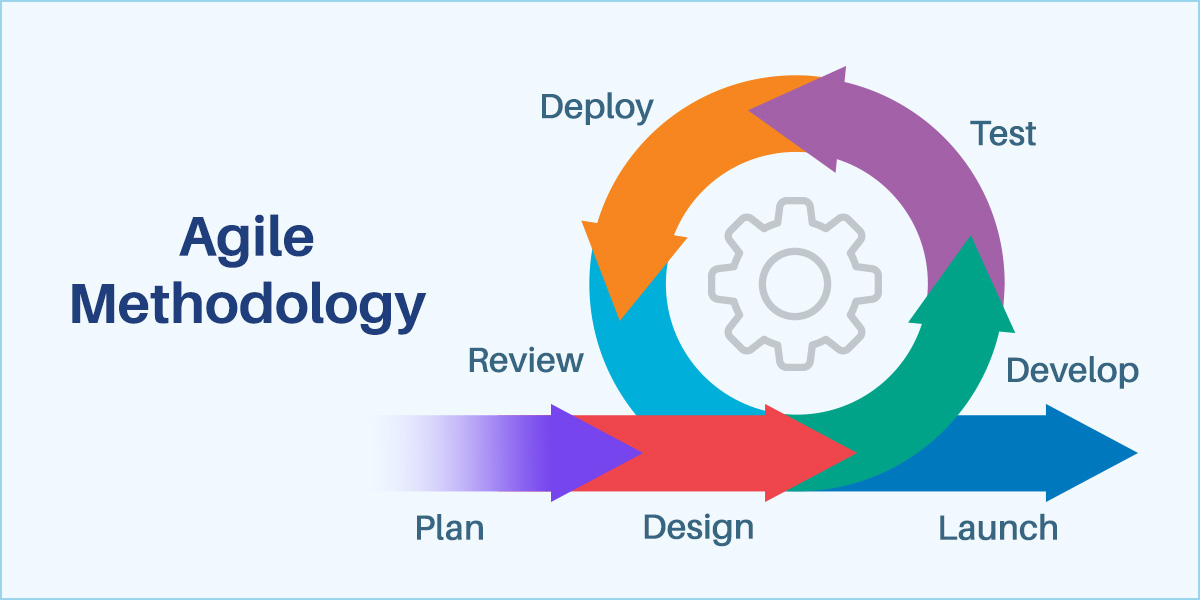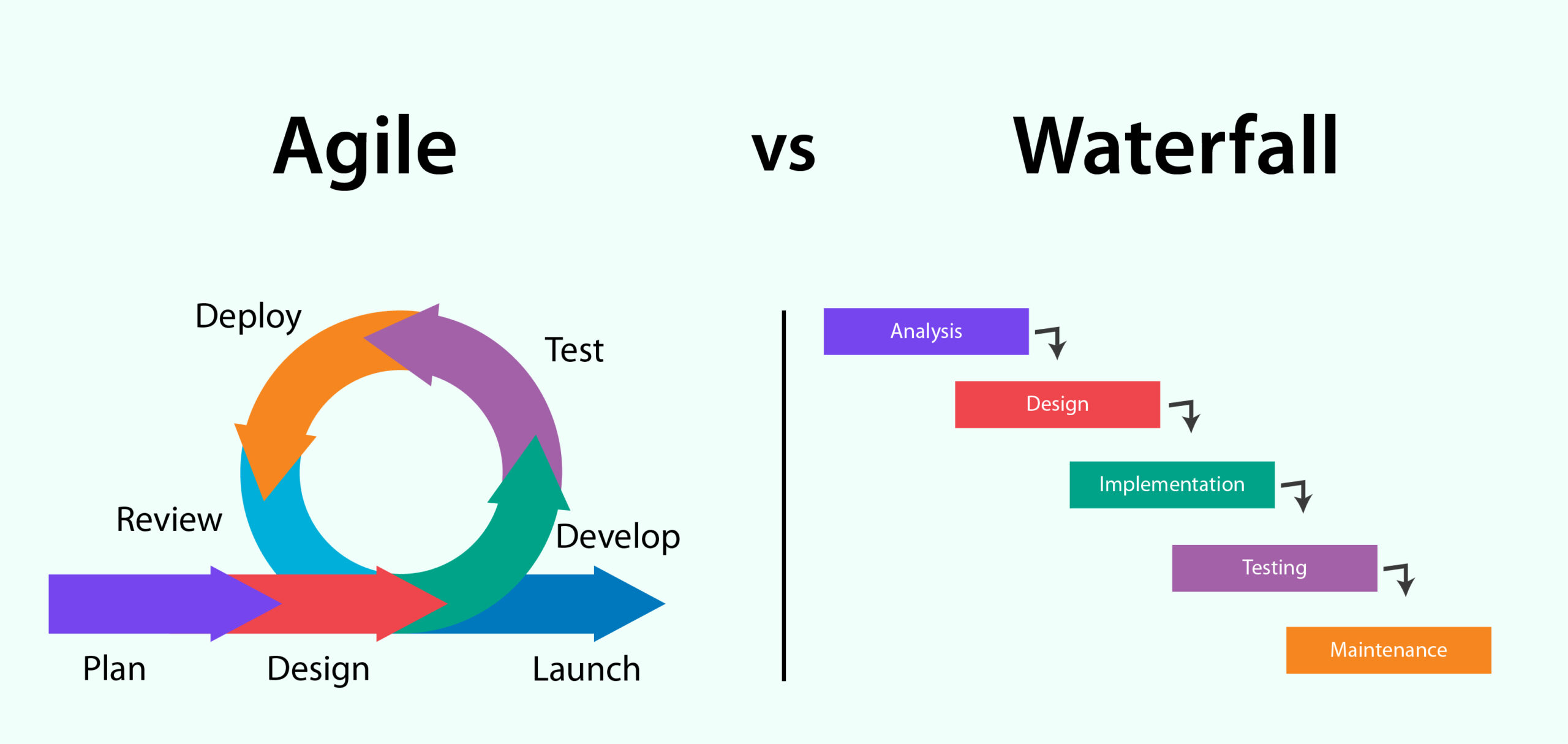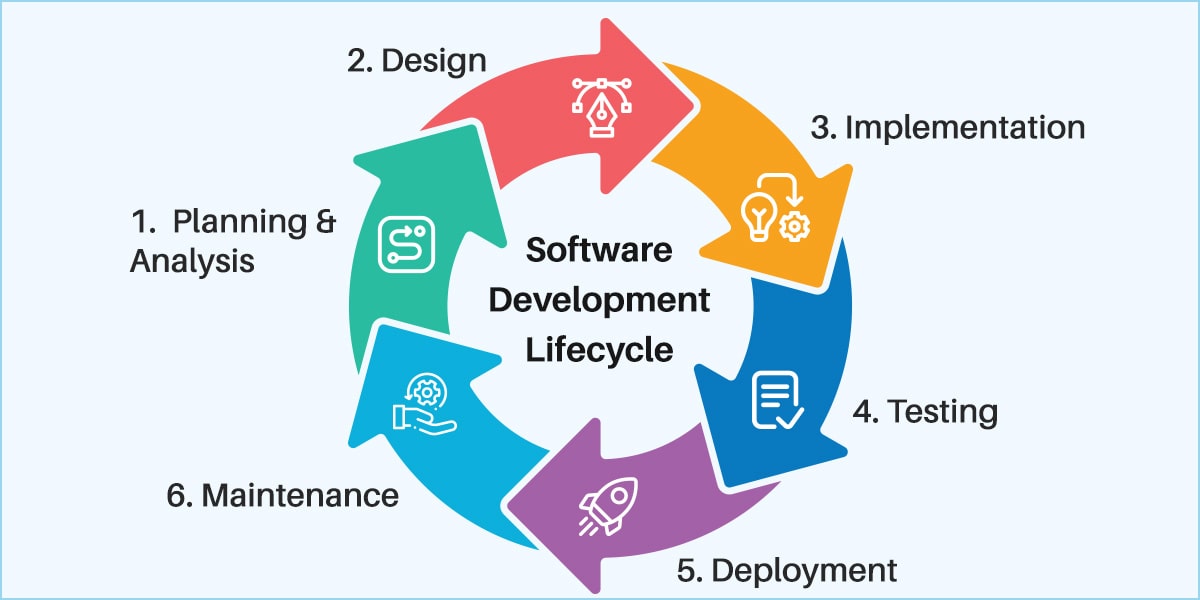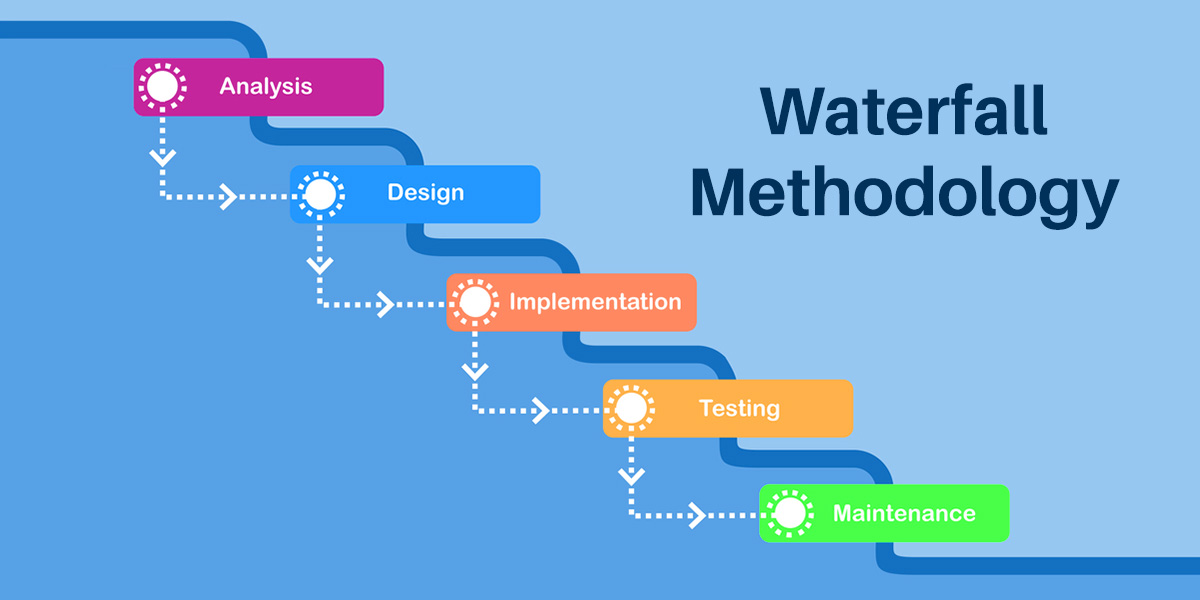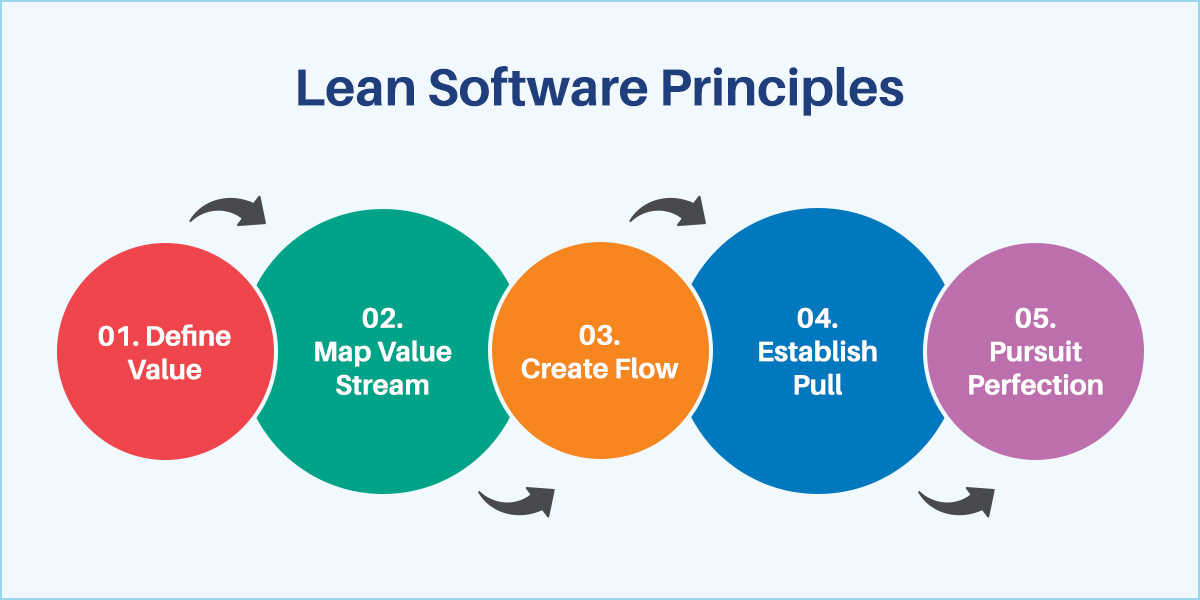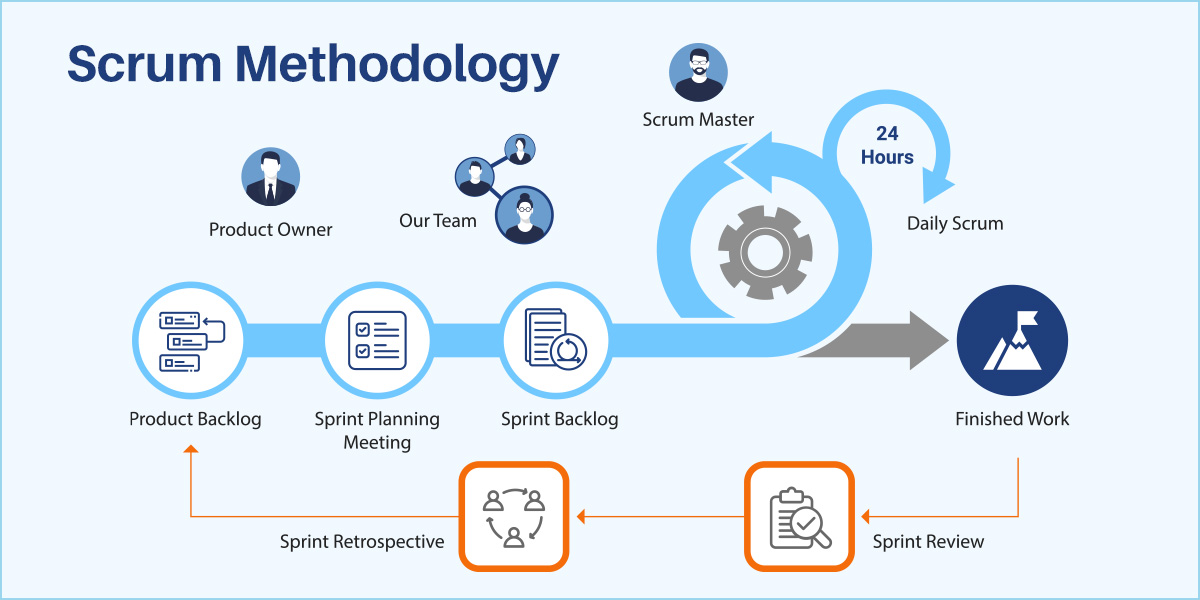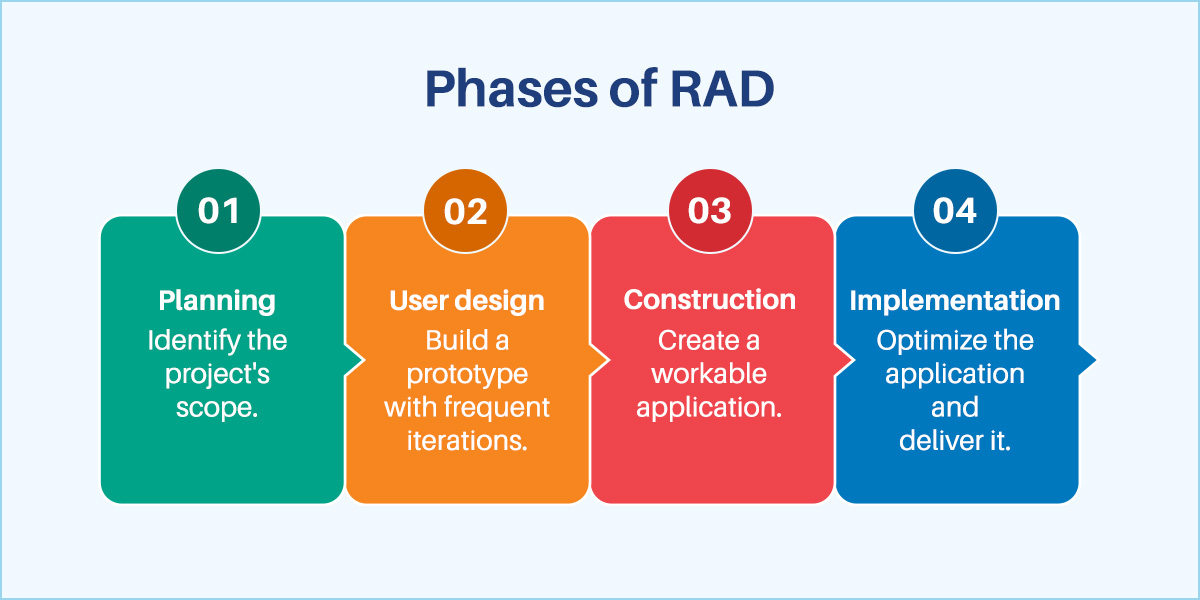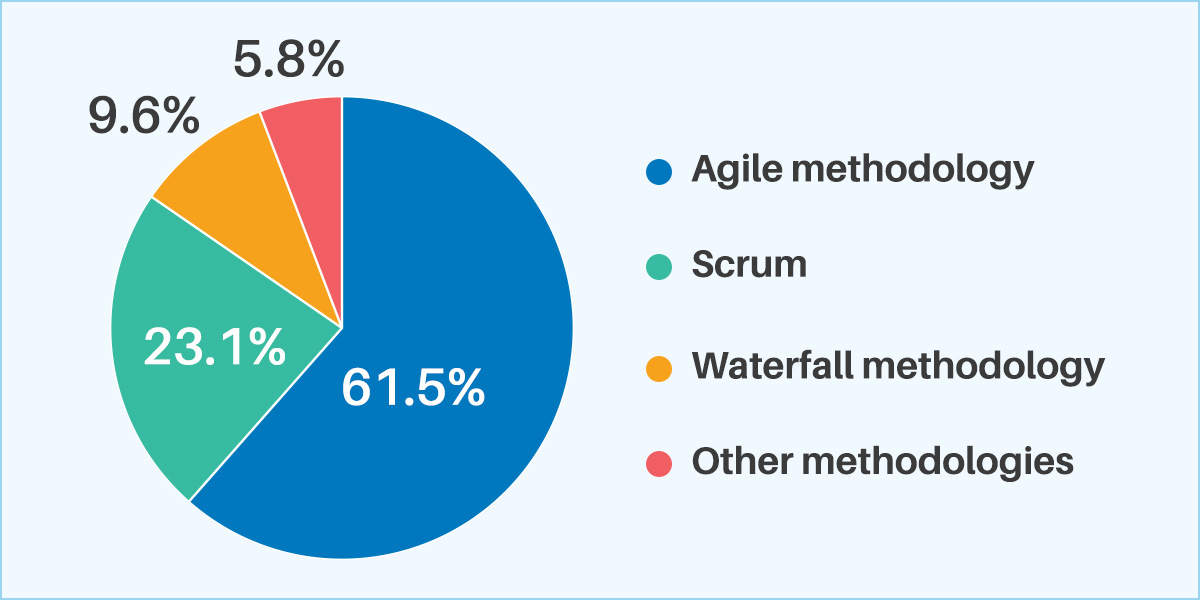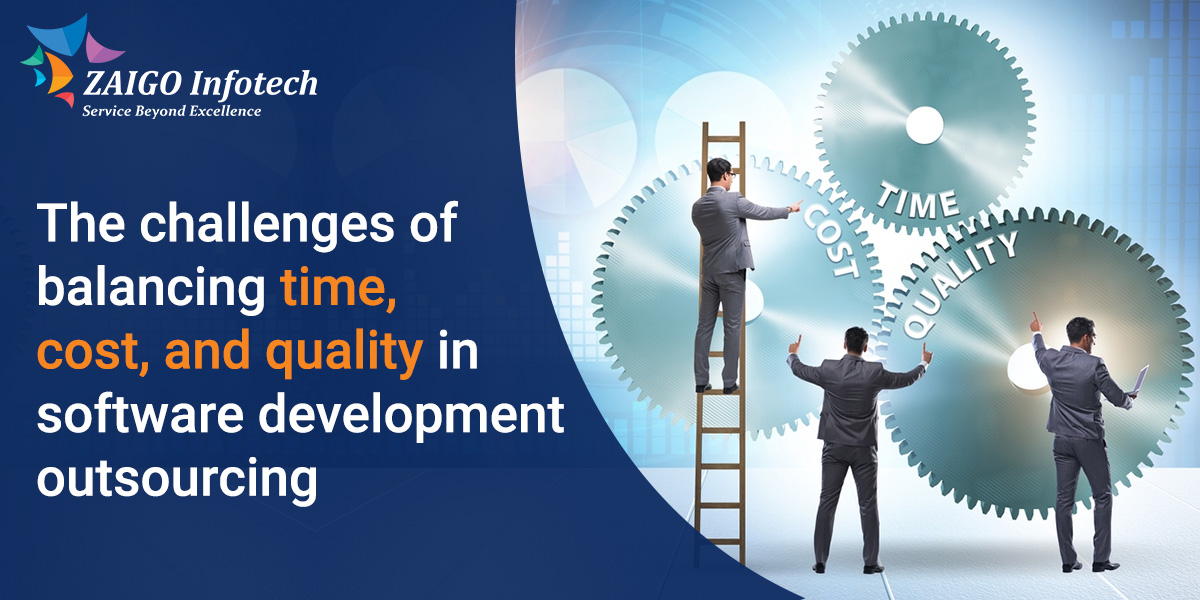What is Agile Software Development?
Agile Software Development methodology emphasizes iterative progress, collaboration, and flexibility. It involves breaking down projects into small, manageable units, allowing teams to adapt to changes quickly and efficiently. The approach encourages frequent communication, customer feedback, and continuous improvement, aiming for early and predictable delivery of valuable software. Agile prioritizes working software over comprehensive documentation, customer collaboration over contract negotiation, and responding to change over following a fixed plan.
Multiple Agile frameworks exist, each with its unique approach to project management and software development:
- Scrum: A highly favored Agile methodology, Scrum organizes development into cycles known as Sprints, typically lasting 1-4 weeks. Each Sprint is aimed at completing a set of predefined tasks, facilitating focused development and rapid progress.
- Kanban: This framework enhances the project’s workflow from start to finish, aiming to increase the quality of the output and overall efficiency. It does so by visualizing work, limiting work in progress, and maximizing flow.
- Lean: Focused on Minimum Viable Product (MVP) development and estimation, the Lean methodology emphasizes building and launching products based on iterative feedback. This approach is centered on value creation with minimal waste.
- Extreme Programming (XP): This methodology focuses on maximizing customer satisfaction by fostering close collaboration, enabling frequent deliveries, and maintaining short development cycles. The aim is to ensure rapid feedback and continuous improvement.
- Feature-Driven Development (FDD): True to its name, FDD involves segmenting the project into various sets of features, with each feature being developed over short iterations. This approach allows for focused and efficient development processes.
- Test-Driven Development (TDD): TDD places a strong emphasis on test-first development, where tests are created before the code is written. The coding then aims at passing these predefined tests, leading to a product that is free from bugs right from the outset.
Important Agile Software Development Principles
Agile software development is anchored on a set of key principles that prioritize flexibility, collaboration, and customer satisfaction. Here’s a concise exploration of agile software development principles:
Customer Satisfaction through Early and Continuous Delivery: Agile software development methodology prioritizes the customer, aiming to deliver valuable software early and continuously. It’s about getting the product into the customer’s hands as quickly as possible to gather feedback and make necessary adjustments.
Welcome Changing Requirements: In an agile environment, requirements can change even late in development. Agile processes harness change for the customer’s competitive advantage, ensuring the final product is as relevant as possible.
Deliver Working Software Frequently: Agile software development focuses on a rapid cycle of release and feedback, with a preference for shorter timescales. This frequent delivery keeps the project aligned with customer needs and market trends.
Collaboration between Business Stakeholders and Developers: Daily cooperation between business people and developers is crucial. It ensures that the end product aligns with business goals and customer needs.
Support, Trust, and Motivate the People Involved: Teams are made up of individuals, and agile relies on their talents and skills to drive the project forward. Agile builds projects around motivated individuals, giving them the environment and support they need.
Face-to-Face Conversation: Agile recognizes face-to-face conversation as the most efficient and effective method of conveying information to and within a development team.
Working Software as the Primary Measure of Progress: Agile processes promote sustainable development. The sponsors, developers, and users should be able to maintain a constant pace indefinitely.
Maintain a Constant Pace: Agile software development understands the importance of a sustainable work pace, allowing teams to remain productive and efficient over time without burning out.
Continuous Attention to Technical Excellence: Agile processes promote sustainable development. Teams should focus on technical excellence and good design to enhance agility.
Simplicity: Maximizing the amount of work not done is essential. Agile values simplicity—the art of maximizing the amount of work that is not done—to increase efficiency.
Self-Organizing Teams: The best architectures, requirements, and designs emerge from self-organizing teams. This principle empowers those doing the work to make decisions about how to do it most effectively.
SReflect and Adjust: At regular intervals, the team reflects on how to become more effective, then tunes and adjusts its behavior accordingly. This principle ensures continuous improvement and adaptation at a manageable pace.
By adhering to these principles, agile software development allows teams to deliver high-quality software that meets customer needs while remaining flexible to changes and improvements.
Top 7 Benefits of Agile Software Development for Business Success
Agile software development is a methodology that has transformed the world of project management and software creation. It’s a practice that prioritizes adaptability, customer satisfaction, and iterative progress, and it brings numerous benefits to businesses aiming for success in a competitive landscape. Here are the top seven benefits of agile software development for businesses:
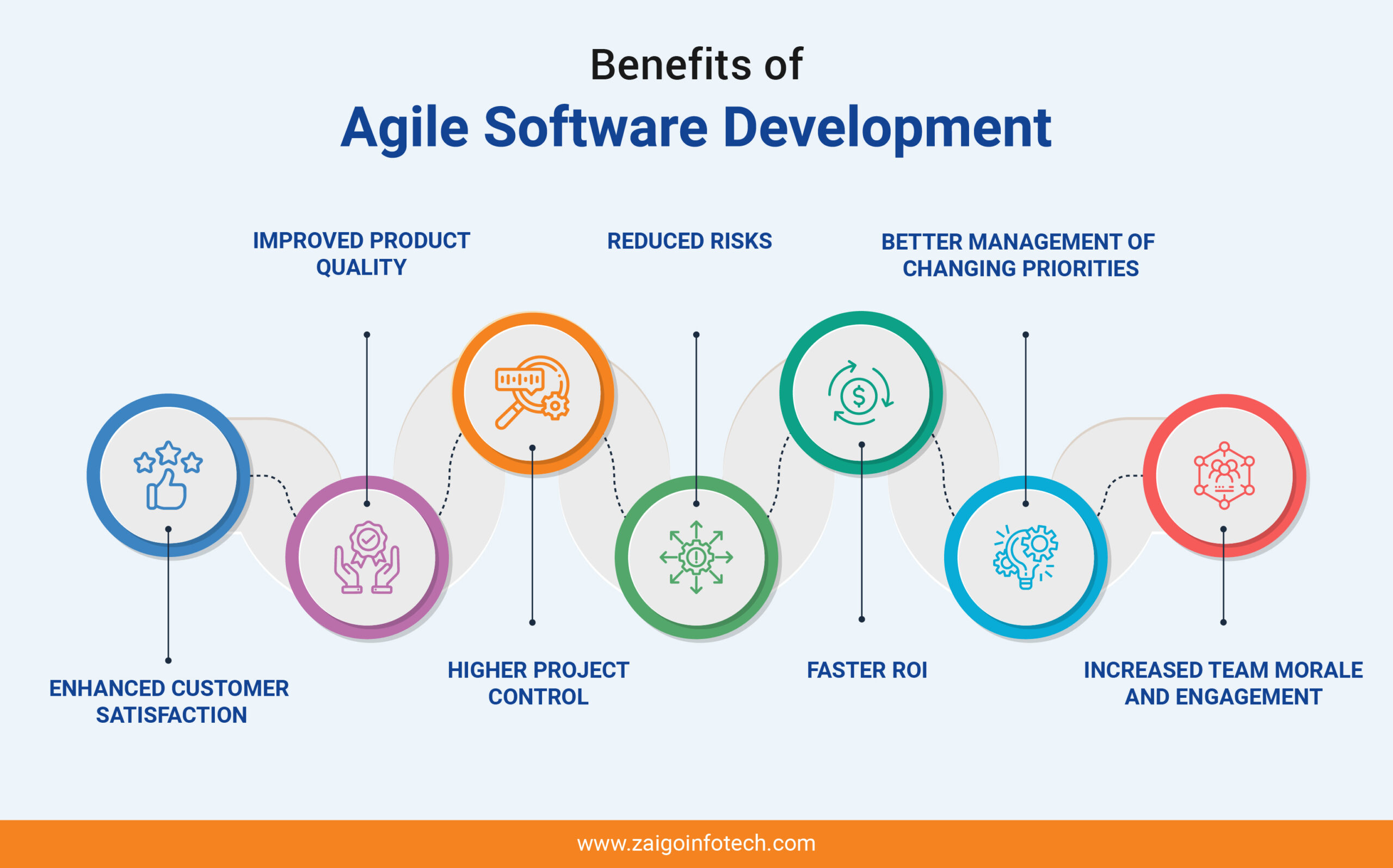
1. Enhanced Customer Satisfaction
Agile software development is all about making sure customers are happy. It lets them see early versions of the software and uses their feedback to make updates quickly. This way, the final software is just what the customers wanted. By keeping up with the latest software development trends, businesses can make their Agile process even better. This makes customers feel like they’re really being listened to and that their opinions matter, which makes them more likely to stick with the product and tell others about it. In short, Agile helps businesses make software that customers love, leading to more success.
2. Improved Product Quality
Agile software development is all about making sure the software is top-notch. In every step, or iteration, the team checks the software carefully to find and fix any mistakes right away. This means they’re always focused on keeping the quality high as they go, not just at the end. Because they’re catching problems early, there’s less need for a big check for issues after everything is supposed to be done. This approach helps make the final software really solid and reliable, with far fewer problems for users to run into.
3. Higher Project Control
Agile software development shines when it comes to keeping everyone in the loop. It lets everyone involved see how the project is moving along through regular meetings and clear charts that show progress. This open book approach means stakeholders can see exactly what’s happening at any moment, making it easier to make smart decisions and changes without throwing the project off track. Being this transparent helps avoid surprises and ensures that the project stays on a smooth path to success, with everyone feeling confident and informed about where things are heading.
4. Reduced Risks
Agile’s method divides a large project into smaller, easier-to-handle segments. This strategy allows teams to examine their work at each phase, gather feedback, and make necessary adjustments without a huge expense or delay. Integrating this method into the software development process ensures that adjustments are manageable and cost-effective, minimizing the risk of derailing the entire project. Dealing with these bite-sized pieces significantly lowers the likelihood of major issues, allowing for corrections early on. This approach smooths out the software development process, making it more secure and efficient, and guiding the project more reliably toward success.
5. Faster ROI
Agile software development methodically introduces features to the product gradually, allowing benefits to emerge even before completion. This incremental approach accelerates market entry compared to traditional models that require full completion before launch.
By integrating considerations of software development costs into this process, businesses can effectively manage expenses, as the method allows for adjustments based on real-time feedback without significant financial overhead. Consequently, companies can begin generating revenue earlier, securing a competitive advantage and facilitating a quicker return on investment. Agile’s efficiency in reducing time to market and optimizing software development cost makes it an ideal strategy for businesses seeking rapid market penetration and financial efficiency.
6. Better Management of Changing Priorities
In the fast-moving world of business, being able to change direction quickly is key. Agile software development is great for this because it lets businesses change what they’re working on with little trouble. This adaptability is crucial for keeping pace with new trends, evolving technologies, and changing customer desires, highlighting the benefits of agile software development. With Agile, companies can keep up or stay ahead of their competitors, because they can adjust faster to whatever comes their way. This way, businesses don’t get left behind and can keep moving forward, no matter how quickly things around them are changing.
7. Increased Team Morale and Engagement
Agile software development really shines when it comes to teamwork. It allows team members to organize themselves and make their own decisions. This sense of control boosts everyone’s involvement and happiness at work. Plus, because Agile breaks work down into short periods known as sprints, teams frequently finish tasks and reach goals. This gives them a steady stream of successes, making everyone feel more accomplished and eager to tackle what’s next. This constant momentum and shared responsibility not only keep the team spirit high but also drive the project forward in a positive and productive way.
Moreover, the benefits of agile software development extend to helping businesses become more adaptive and responsive to the market. By breaking down large projects into manageable tasks, teams can focus on high-quality development, testing, and collaboration. Agile’s emphasis on face-to-face communication and daily stand-up meetings enhances team synergy and problem-solving capacities.
Businesses that embrace agile software development find that their project management process becomes more responsive and creative. They can more effectively manage complex projects by allowing cross-functional teams to work in tandem, fostering innovation, and pushing the envelope of what’s possible within a given timeframe.
Finally, the iterative approach of agile software development enables continuous learning and adaptation. It’s not only about fixing mistakes but about learning from them and improving the product and process with each sprint. This continuous improvement loop leads to excellence in both the development process and the end product.
If you think Agile is the right fit for your next project, you need to know the different Agile Software Development tools.
Final Thoughts
Agile software development is not just a methodology; it’s a strategic asset for businesses navigating the dynamic landscape of today’s market. Its inherent flexibility and responsiveness empower companies to stay ahead of the curve, adapt swiftly to emerging trends, and meet evolving customer demands. As you seek to leverage the benefits of agile software development for your business, consider partnering with a reputable agile software development company in India. With their expertise and guidance, you can unlock the full potential of agile methodologies, driving innovation, efficiency, and success. Take the next step towards your business’s growth and competitiveness by collaborating with an agile software development company today.



